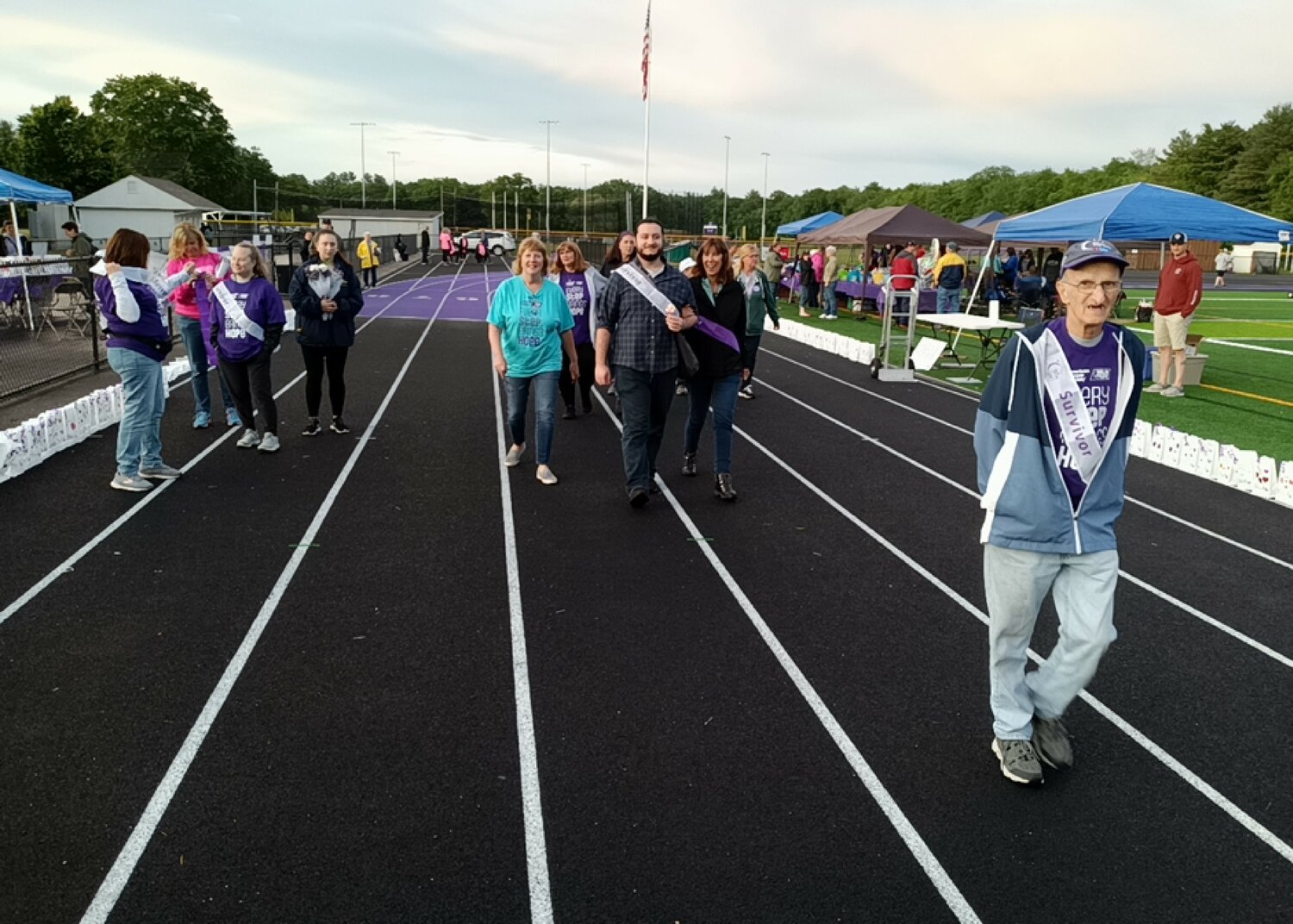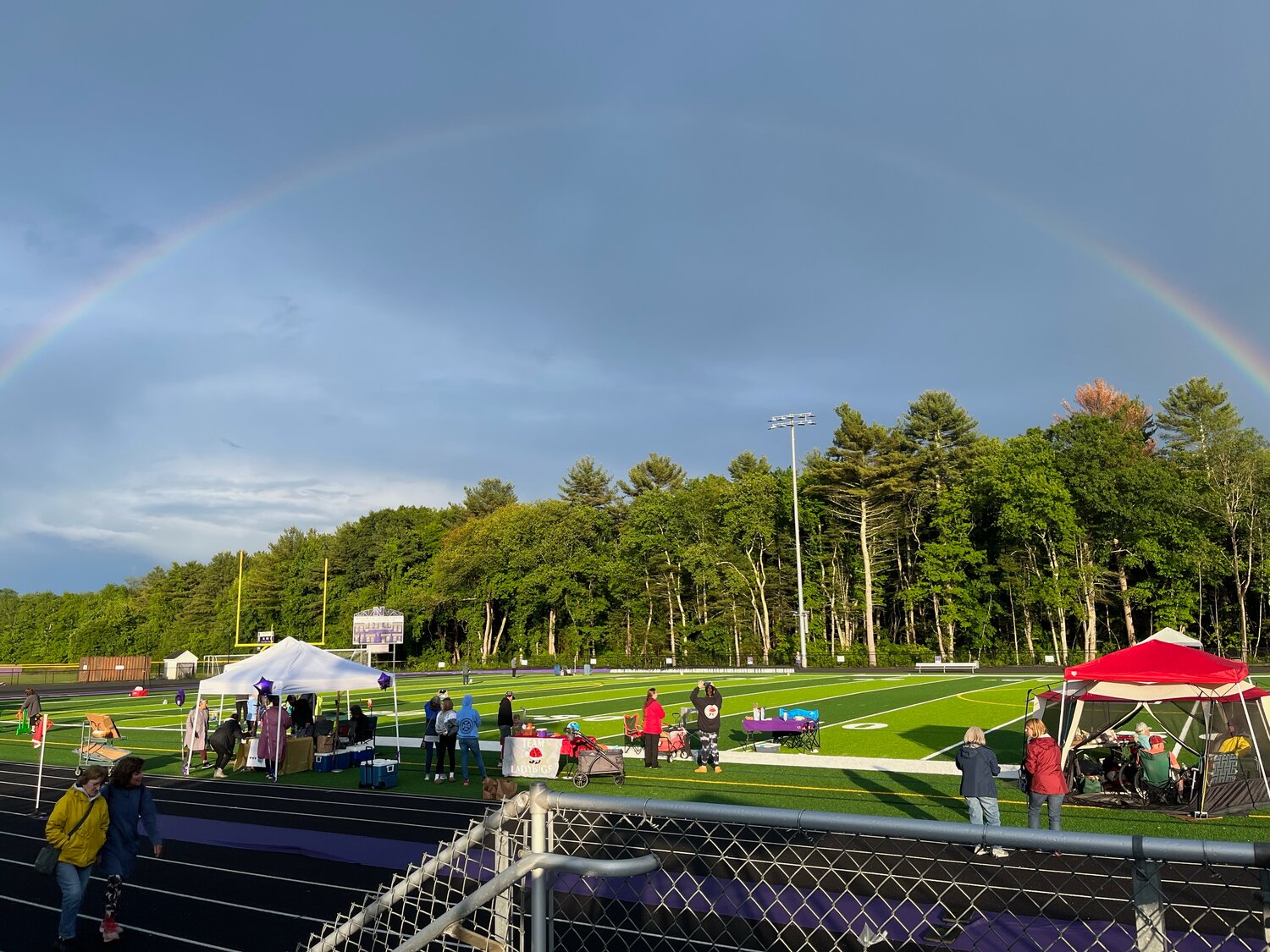Hope has powered this cancer society fundraiser for 25 years
I’ve been a part of the Relay For Life of Greater Attleboro, a team fundraiser for the American Cancer Society, since 2000, its second year. I was a member of a team and the organizing committee for the 25th anniversary event, held in June at Norton High School.
The relay has always had a simple premise: Raise money for the agonizing fight against cancer while recognizing survivors and remembering those for whom life-saving drugs and treatments came too late.
For those who may not be aware of the event’s origin, the national relay was started in 1985 by Dr. Gordon “Gordy” Klatt, who walked and ran for 24 hours around a track in Tacoma, Washington. He covered 83.6 miles and raised $27,000. (Klatt died Aug. 3, 2014, from heart failure and stomach cancer.)
In its first 24 years, the Greater Attleboro relay raised more than $4.5 million. That money has paid for, among other things, transportation to and from medical appointments, lodging for cancer patients, and research into lifesaving treatments and drugs. (Close to $50,000 has been raised so far this year; money will be collected through July.)
Although some things have changed since the first Attleboro-area relay was held, at North Attleboro High School in June 1999, many things have stayed the same. Participants still circle the track from the opening ceremony on Friday through the wrap-up on Saturday morning. Candles called luminarias, illuminated with glow sticks, are still lit around the track in memory of cancer victims and in honor of survivors.
The luminaria ceremony, held on the opening night, has always been one of the relay’s most moving aspects for me because it’s a chance to pray for friends and relatives battling cancer, and to remember loved ones who died from the disease.
Years ago, the thought occurred to me that the luminaria ceremony is comparable to the lighting of yahrtzeit candles, except that instead of candles being lit in your home, hundreds of the luminarias brightly glow outdoors.
Before each relay, I compile a list of friends and relatives to honor with luminarias, and one of the toughest things is when people remembered as survivors one year become cancer victims the next.
What keeps people returning yearly is the hope that the event instills. The relay offers a powerful antidote to the raw hatred, turmoil and violence that frequently mark today’s society.
But this year, participants’ resiliency was challenged when a severe late-afternoon thunderstorm pounded the Norton High School track, upending the event and forcing people to take shelter in the high school’s cafeteria.
It would have been easy to give up, but no one did.
Hope won out, despite the storm, in five ways:
1. An inspiring opening ceremony: Jonathan Gardner, of East Bridgewater, Massachusetts, a 20-year-old self-described “cancer survivor who happens to have autism,” was one of two guest speakers, and his words uplifted the crowd jammed into the cafeteria for the opening ceremony. He shared several lessons he said he’s learned since being diagnosed in 2021 with Ewing sarcoma, a rare cancer of the bones or soft tissue around the bones. Those included:
• Give up some control. “Cancer is extremely hard to do, but you have to give up some control. I am a little bit of a control freak myself so I know how hard this will be.”
• “Find joy in every day. Take something positive out of every single day.”
• Ride the wave, which he said consists of imagining yourself falling off a surfboard, and then climbing back on it. “If we can picture ourselves riding that wave, we can try and feel more secure knowing that we will have our control back one day, when we get to shore.”
• Pray, because “when you are in a hard place, sometimes the best option I can give you is to pray.”
2. Survivors’ laps: The relay’s traditional first lap, taken by survivors and their caregivers, was delayed more than an hour by the storm, but it was nonetheless inspiring. Ditto for the silent lap held later in the night. It was led by a bagpiper and is held as part of the luminaria-lighting ceremony, and also featured survivors. Seeing them circling the track goes to the heart of what the event is all about.
3. Artfully done: A silent auction of luminarias decorated by 18 artists in February at the Attleboro Arts Museum was curtailed by the weather, but it still drew interest. Many of those luminarias, lovingly crafted during Attleboro’s Winter Night Festival, found permanent homes.
4. Dedication to the cause: Participants are highly committed to the event.
For example, Jakob Carlson and Ericka Speeckaert, of Attleboro, joined the relay’s volunteer committee last year, and this year started a team called “Mrs. Peacock’s Sole Squad.” Jake walked to honor his grandmother, who died of cancer in 2014, while Ericka relayed in memory of her mother, Carolyn, who passed in 2016.
“We knew we wanted to do something that was meaningful to us,” Ericka said.
Team names are very personal and often honor loved ones affected by cancer. For instance, Ericka explained that their team got its name because her mother taught elementary school in Pawtucket and when her students couldn’t pronounce “Speeckaert,” they started calling her “Mrs. Peacock.”
5. A divine miracle: When people emerged from the cafeteria after 7 on Friday evening, they found sunny skies – and a glorious rainbow. Dozens of camera phones immediately pointed skyward to capture what seemed to be nothing less than a miracle.
That wasn’t the first time that a rainbow has appeared at a relay, but it was a most welcome sight on the event’s silver anniversary. It was as if Mother Nature supported the cause and joined the celebration.
To donate to the Relay For Life of Greater Attleboro, go to www.relayforlife.org/GreaterAttleboroMA.
LARRY KESSLER (larrythek65@gmail.com) is a freelance writer based in North Attleboro. He blogs at larrytheklineup.blogspot.com.











